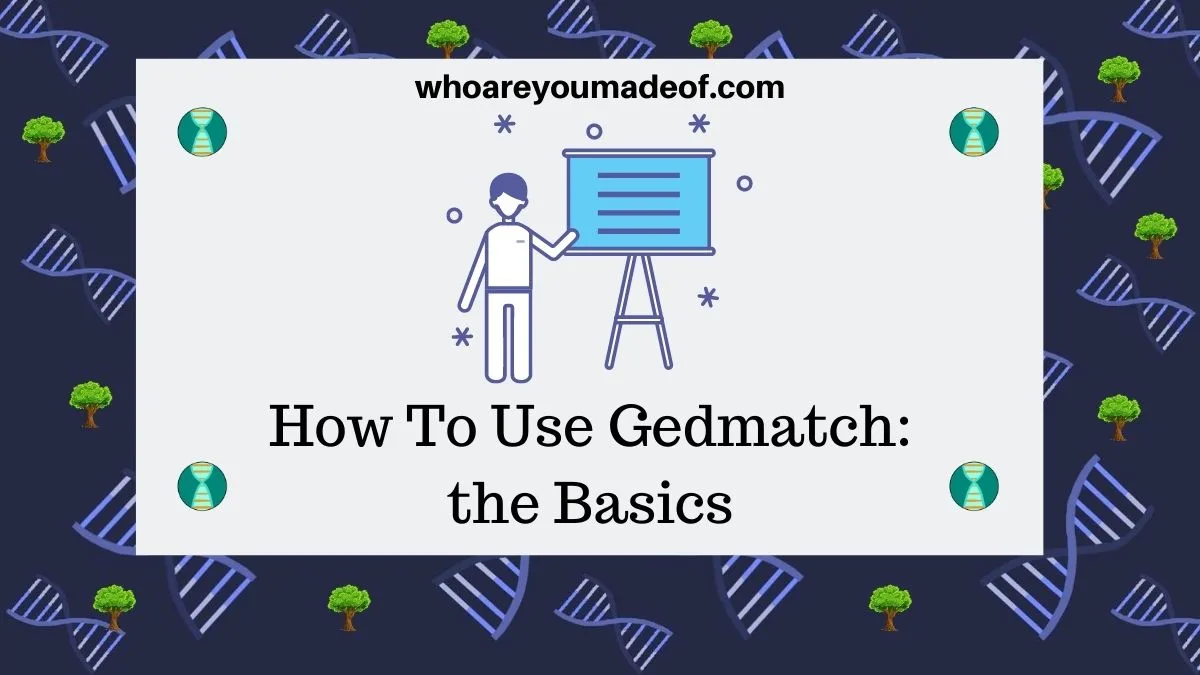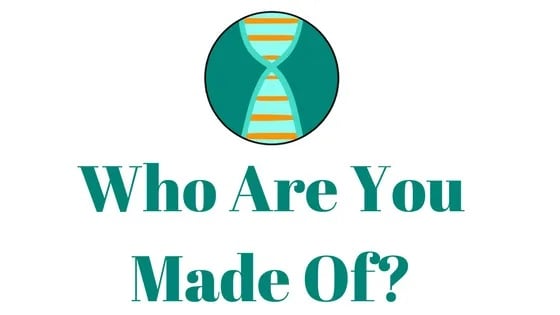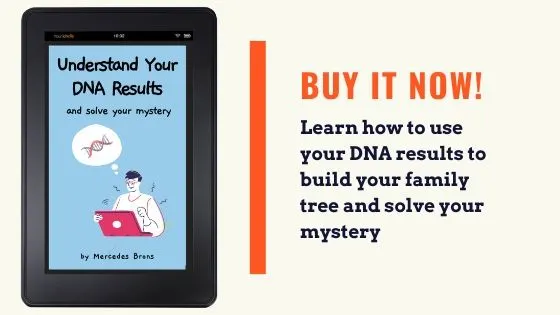Do you want to learn how to use Gedmatch? Check out this free step-by-step guide to learning the basics of Gedmatch. Find new DNA matches and DNA tools!
If you've had your DNA test results for a while, you might have heard of this really great website called Gedmatch. Gedmatch is a website where you can upload your raw DNA file and compare it to other users of the website, along with many other interesting and useful utilities.

Before we get started, I want to mention a few reasons why you should be using Gedmatch to get the most from your DNA results.
Why Gedmatch is great
- It's completely free to get started and there are many free tools you can use
- You can find living relatives who tested their DNA with a different company than you
- Gedmatch allows you to see where you match your relatives on individual chromosomes
- There are tools for genealogy, as well
- You can view X-DNA information on your matches
- Your relatives e-mail addresses are listed, making it easy to make contact
- There are alternative ethnicity calculators, helpful for spotting trace ethnicity
Steps for how to use Gedmatch
In order to get the most from the site, you'll need to go throw the following steps. I'll list these for quick reference, and then you can scroll down to see details if there is a step that you'd like to explained more thoroughly.
If the website seems a little confusing when you first log in, don't worry - I will tell you all about how to use Gedmatch right here!
Here they are:
- Download your DNA from your testing company
- Create a Gedmatch account, and upload your raw DNA file
- Wait for a few hours before being able to use all tools
- Run the One-to-Many comparison tool
- If there are matches that interest you, run the One-to-One comparison tool
- Check out the DNA plus Gedcom function
- Explore the various admixture calculators available
Gedmatch doesn't test DNA - do you need to do a test?
Since Gedmatch doesn't actually test DNA, we have to test our DNA with another company first. Then, we can download our raw DNA data file and upload it to Gedmatch.
If you haven't yet done a DNA test, you can use the links below to get your test. All of the companies that I recommend (on the list below) give great results and allow customers to download their data.
Download your DNA from your testing company
The first thing that you should do is download your DNA from your testing company. Most companies companies offer this feature. If you tested with any of the top testing companies, including Ancestry DNA, Family Tree DNA, 23 and Me, and My Heritage DNA, they all offer raw DNA downloads.
I recommend downloading your DNA for your own records, even if you don't plan on uploading it to another site.
Your DNA file will come in a .zip file. Leave it just like that, don't unzip it. The information contained within the file will make no sense to you, since it is made for computers to understand, so don't both even being curious 😉
These are company-specific instructions about how to download your raw DNA file:
- How to download your DNA from Family Tree DNA
- How to Download Ancestry DNA File
- How to Download 23andMe DNA file
Create a Gedmatch account and upload your DNA file
Visit Gedmatch and create a completely free account - it should only take a few seconds of your time. Once you have your account set up, you can start uploading your raw DNA file.
If you need me to walk you through the steps of uploading your data, read this post:
Once your DNA is uploaded, it is referred to as a "kit".
Wait for a few hours before being able to use all tools
Once Gedmatch tells you that your DNA has uploaded and batching is done, you need to wait for a few hours (it rarely takes longer than this). Once processing is completely done, you'll be able to use all of the tools available on the site.
(With the exception of the premium tools available to those who donate a small amount monthly)
Write down your kit number that is shown on the screen. You will be able to find this when you log into Gedmatch under the DNA Resources section. You need this number in order to use the tools available.
Run the One-to-Many comparison tool
The first thing that you should do once your kit is completely uploaded is to find out if you have any interesting DNA matches on the site. In order to do this, you'll need to run the One-to-Many tool.
I wrote a post about what each column means:
How to understand Gedmatch One-to-Many Results
Run the One-to-One comparison tool
If there are close-ish matches that you find interesting or new on your One-to-Many list, the first thing that you should do is compare your DNA with theirs in the One-to-One tool. This tool will allow you to see how many DNA segments you share with your match, exactly where they are on your chromosomes, along with various other information bits.
In this post, you'll find more detailed information about what you can learn from One-to-One results on Gedmatch:
What Does the Gedmatch One-to-One Tell Me?
You will want to use this tool before you contact your matches, just to verify the relationship and learn as much as you can about how you might be related. If you are interested in contacting your matches, you might be interested in these posts:
- Six Reasons that you Should Contact Your DNA Matches
- Should I Get in Touch With My DNA Matches
- How to Contact DNA Matches
Explore the Gedmatch + DNA matches utility
I love family trees. Even though they aren't always 100% reliable, they can provide a wealth of information and give you clues about how you might be related to your DNA matches.
On Gedmatch, there is a special tool available that allows you to only find DNA matches that have uploaded a family tree. This is one of my favorite tools to explore when I upload a kit to Gedmatch. You never know what you'll learn!
To use this tool, you just have to type in your kit number and submit it. You'll then get a new spreadsheet-type list where you'll see kit numbers, names, amount of DNA shared, Gedcom numbers, and e-mail contact information for all of your matches who have family trees on the site.
I like to explore the family trees looking for common surnames and other clues that might help me in my search. Of course, you might easily spot someone who is closely related, and that's great, too!
Check out the admixture calculators
In the world of genetic genealogy, "admixture" is just a fancy word that means something mixed with something else. Like Eastern European mixed with Western European. Or Mali and Southeastern Bantu mixed with Iberian.
Your DNA testing company provided you with an ethnicity estimate based on their own reference population. Your ethnicity estimate is just that - an estimate.
There are lots of people (researchers, hobbyists) who have begun their own DNA ethnicity projects, and you can access many of them on Gedmatch. While they are also only estimates, and perhaps slightly less scientific in nature than some of those run by the big testing companies, they can still be useful as an alternative interpretation of your individual DNA results.
To use this tool, you'll have to pick the admixture calculator that you want to use (try a few just to see what you find) and enter your kit #. It can take a minute or so for the results to load.
Conclusion
I hope that this post has helped you get started with Gedmatch. If you have any questions, or would like to share (or have a question about) something that you found on Gedmatch, I would love to hear from you in the comments.
Thank you so much for stopping by!

